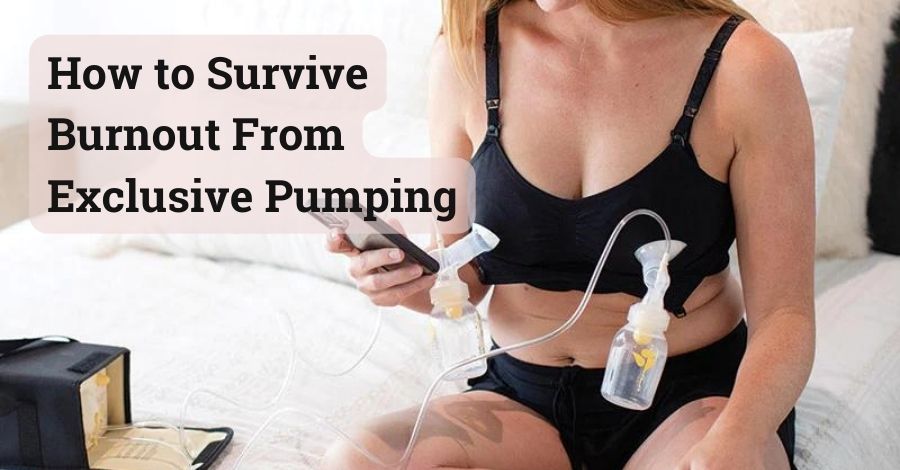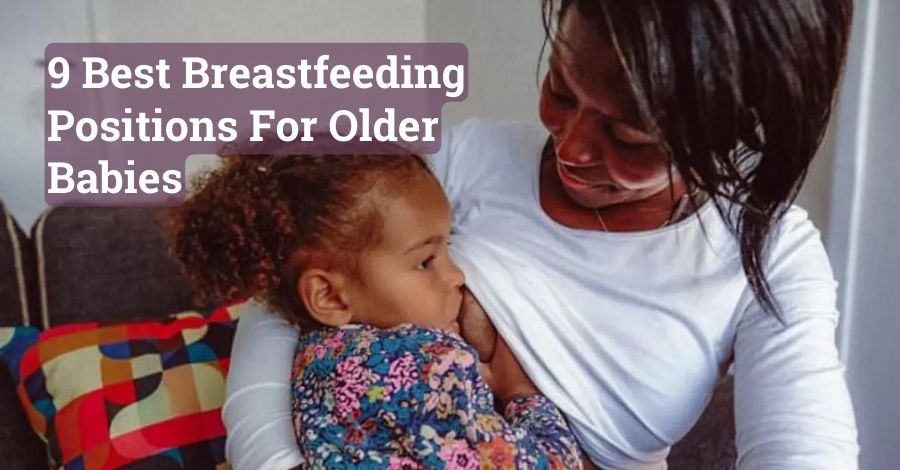
Key Points
- The article discusses the importance of comfort and why new breastfeeding positions matter for older babies.
- The best breastfeeding positions for older babies are listed, emphasizing the need for good support and flexibility.
- Signs that indicate a need for a new position are outlined.
- The text also explains the changing needs of older babies and provides tips for successful breastfeeding.
- Finally, it encourages flexibility, dealing with distractions, and patience in finding the right position for each baby.
Breastfeeding is a beautiful journey that evolves as your baby grows. When your little one becomes more active and aware, it’s time to consider new breastfeeding positions. Here’s everything you need to know about finding the breastfeeding positions for older babies to keep you and your baby comfortable and happy.
Comfort is Key
Comfort is the most crucial factor when breastfeeding an older baby. As your baby grows, they become more mobile and curious, which can make feeding time a bit of a challenge. Ensuring both you and your baby are comfortable can make all the difference.
You May Also Read: When Does Breastfeeding Get Easier? A New Mom’s Guide
For mothers, this means finding a position that supports your back, arms, and shoulders. For babies, it’s about finding a position that allows them to latch properly and feed effectively. The right position can prevent discomfort, reduce the risk of nipple pain, and make breastfeeding a relaxing experience for both of you.

Why New Positions Matter
As babies grow, their needs and preferences change. New breastfeeding positions can accommodate these changes and make feeding more effective and enjoyable. Older babies are more alert and distracted by their surroundings, making it harder to keep them focused on feeding.
Studies shows that new positions can help manage these challenges by offering more control over your baby’s movements and ensuring they latch correctly. They also allow for better eye contact and bonding, which is important for emotional development. Plus, experimenting with new positions can make breastfeeding more interesting and engaging for both of you.
Best Breastfeeding Positions for Older Babies
1. Modified Cradle Hold: This classic position works well for older babies. Your baby lies across your lap, tummy to tummy, with their head supported by your forearm. Use pillows to support your back and arms.
2. Cross-Cradle Hold: Similar to the cradle hold, but with your baby’s head supported by the opposite arm. This position offers more control over your baby’s head and helps with proper latching.
3. Side-Lying Position: Great for nighttime feedings or when you need to rest. Lie on your side with your baby facing you. This position is relaxing and can help with bonding.
4. Football Hold: Tuck your baby under your arm like a football, with their body alongside your side and their legs pointing towards your back. This position is good for mothers recovering from a C-section or those with larger breasts.
5. Laid-Back Position: Lean back in a semi-reclined position with your baby lying on your chest. Gravity helps keep your baby in place, making it a comfortable and natural position.
6. Upright or Koala Hold: Have your baby straddle your thigh or hip, facing your breast. This upright position is good for babies with reflux or those who prefer sitting up.
7. Dancer Hand Position: Support your breast with one hand and use your other hand to support your baby’s head and jaw. This position is useful for babies who have difficulty latching.
8. Nursing in a Sling: Use a baby sling or carrier to support your baby while they nurse. This position allows for hands-free feeding and is convenient for on-the-go breastfeeding.
9. Twin Hold: If you’re nursing twins, hold one baby in the cradle hold and the other in the football hold. This allows you to feed both babies at the same time. You May Read: 5 Best Positions for Breastfeeding Twins
Pro Tip: Don’t be afraid to try out different positions until you find the one that feels right for both you and your baby. Just remember, comfort and making sure they’re getting enough milk are what really matter.
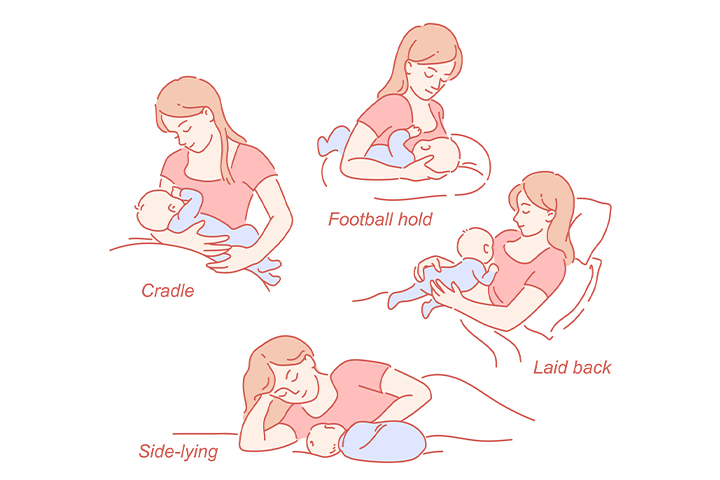
What Makes a Good Position for Older Babies?
A good breastfeeding position for older babies should meet several criteria. First, it should support proper latching to ensure effective feeding and prevent nipple pain. It should also accommodate your baby’s increasing size and mobility, allowing them to feed comfortably without straining their neck or body.
The position should also support your comfort. This means providing adequate support for your back, arms, and shoulders, and allowing you to relax during feeding sessions. Finally, a good position should encourage bonding, with plenty of opportunities for eye contact and interaction.
Signs Your Baby Needs a New Breastfeeding Position
As your baby grows, you might notice signs that it’s time to switch up your breastfeeding positions. Here are some indicators to watch for:
- Discomfort: If you or your baby seem uncomfortable during feeding, it might be time to try a new position.
- Poor Latch: If your baby is struggling to latch properly, a different position might help.
- Frequent Fussiness: If your baby is fussy or restless during feeding, they might benefit from a change in position.
- Distractibility: Older babies can be easily distracted. A new position might help them focus better on feeding.
- Feeding Time Changes: If your baby’s feeding times are becoming shorter or longer, it might indicate they’re not feeding efficiently, and a new position could help.
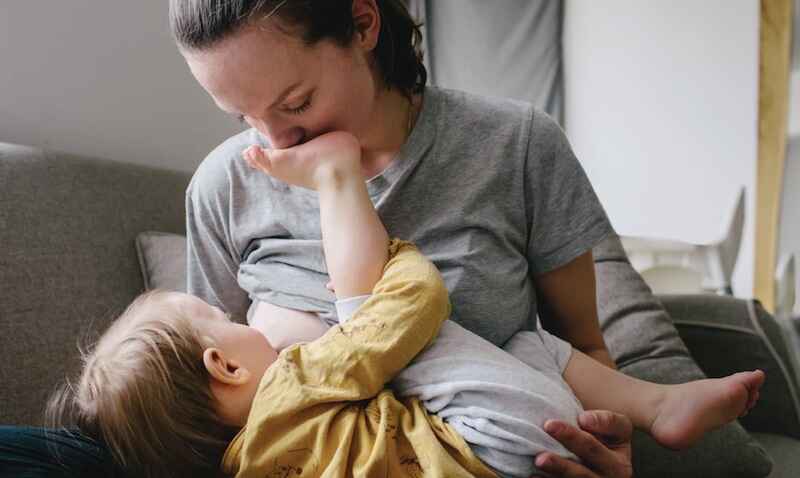
Understanding Older Baby Nursing Needs
Older babies have different nursing needs compared to newborns. They are more curious and mobile, which can make feeding times more challenging. They also have a stronger suck and more developed motor skills, which means they might feed faster and more efficiently.
It’s important to adapt to these changing needs by finding positions that support their growing bodies and developing skills. Older babies might also start to nurse less frequently but more effectively, so having flexible and comfortable positions can make these changes easier to manage.
The Importance of Experimentation
Finding the perfect breastfeeding position for your older baby often requires some experimentation. Don’t be afraid to try different positions to see what works best for you and your baby. What works for one feeding might not work for another, so being flexible and open to change is key.
Listen to your baby’s cues and adjust as needed. If a position isn’t working, try something new. Remember, every baby is different, and what works for one might not work for another. The goal is to find a position that makes feeding time enjoyable and effective for both of you.
Beyond Positions: Breastfeeding Tips for Older Babies
Remember, positioning is just one part of breastfeeding. Here are some more tips to help you breastfeed your older baby successfully.
Watch your baby for hunger signs and offer the breast when they show interest. Be patient; it might take a bit of time and trying different positions to find what works best for both of you. Relax and enjoy this special time. Breastfeeding is a wonderful bonding experience. Take a deep breath, stay calm, and cherish the snuggles with your little one. It might take some practice to find the perfect hold, but it’s worth it.
Tips for Success
Here are some additional tips to help you find the best breastfeeding positions for your older baby:
- Use Pillows: Pillows can provide extra support for both you and your baby. They can help elevate your baby to the right height and support your arms and back.
- Stay Relaxed: Stress and tension can make breastfeeding more difficult. Try to stay relaxed and calm, and make feeding time a peaceful experience.
- Stay Flexible: Be open to changing positions as your baby grows and their needs change. What works today might not work tomorrow, so be ready to adapt.
- Consult a Lactation Expert: If you’re struggling to find the right position, don’t hesitate to seek help from a lactation consultant. They can offer personalized advice and support.
Conclusion
Breastfeeding an older baby comes with its own set of challenges and rewards. Finding the right positions can make all the difference in ensuring a comfortable and effective feeding experience. By focusing on comfort, adapting to your baby’s changing needs, and being open to experimentation, you can find the breastfeeding positions for older babies that work for you and your growing baby.
Remember mamas, there’s no single “perfect” position. Every breastfeeding journey is unique, and what works best is what feels right for you and your baby. Enjoy this special time together, and cherish the bonding moments that breastfeeding brings. Don’t hesitate to seek help from a lactation consultant if you have any questions or concerns.
FAQs
What is the best position to breastfeed a big baby?
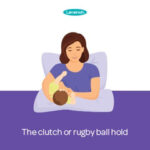
There isn’t one single “best” position for breastfeeding a big baby, but one particularly comfortable option is the rugby hold. This position can be helpful for bigger babies because it allows you to support more of their weight with your arm, taking some strain off of your shoulders and back.
– Picture: lansinoh.co.uk
What is the correct position for a 6 month old baby to breastfeed?
The side-lying position is great when you and your baby are comfortable with breastfeeding. Lie on your side with pillows behind your back and head. Make sure your baby faces your breast, and support them with one hand. Then, use your other hand to hold your breast and gently touch your nipple to your baby’s lips.
What are the side effects of feeding a baby lying down?
Odochi Ewurum, a consultant paediatrician at the Federal Medical Centre (FMC), Umuahia, Abia state, mentioned a downside of lying down while breastfeeding. When the child sucks, there’s a risk they could accidentally inhale breast milk into their lungs, causing a lung infection. Also, some milk might drip out of the mouth and enter the ear while the child is nursing.
What is the easiest position to breastfeed in?
it down on a chair with a soft cushion or pillow next to you. Put your baby on the same side you want to feed from, under your arm, and keep their hips close to yours. Make sure your baby’s nose is in line with your nipple. Use your hand to support your baby’s neck.
– Source: https://www.nhs.uk/
What is the painless position for breastfeeding?
Lie on your side with your baby next to you, both facing each other. Get comfy with pillows for your head and back if you need them. Your baby should be on their side too, with their tummy close to yours. You can cuddle your baby with your arm or use it to hold their head gently.
What position should older babies be breastfeeding?
Sit your baby on your thigh or hip. Make sure their back and head are straight while they breastfeed. “This position is going to be more for an older baby,” clarifies Costa. “It’s an easy position to use when you’re out as your child gets older and they can hold their head up.”
Why do mothers sleep while breastfeeding?
Oxytocin, sometimes called the “cuddle chemical,” is really helpful for new moms who are breastfeeding. But it can also make you feel tired.
References:
- Breastfeeding your older baby – https://www.breastfeeding.asn.au/resources/breastfeeding-older-baby
- 5 Tips for Breastfeeding an Older Baby – https://www.happiestbaby.com/blogs/baby/breastfeeding-older-baby
- Breastfeeding An Older Baby (PDF) – https://www.health.state.mn.us/docs/people/wic/nutrition/english/bfolderbaby.pdf
- Extended Breastfeeding: Can You Nurse for Too Long? – https://www.healthline.com/health/breastfeeding/extended-breastfeeding
- What to know about extended breastfeeding: Pros and cons – https://www.medicalnewstoday.com/articles/extended-breastfeeding

Hi, I’m Lindley! I’m a stay-at-home-mom sharing all of the tips and tricks I learn throughout my motherhood journey. I’m now navigating through wife life and being a mom while blogging my crazy adventures. I’m so glad to have you along for the ride!

